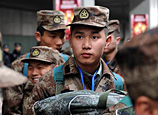
The United States’ Returning to Asia-Pacific is a significant diplomatic adjustment in recent years which triggered a series of complicated reactions in Southeast Asia. Here are some point views of domestic and foreign experts on this issue, by which we can further understand the development and the influence of U.S. Returning to Asia-Pacific strategy.
Su Lin: ASEAN should be very prudent in dealing with the relations with the two superpowers and seek balance. It will remain neutral instead of choosing sides in the hope to gain benefit rather than damage out of the relations.
Li Jianxiong (Director of Public Affairs Department, ASEAN Secretariat): Some Southeast Asian countries hope to gain support from the United States but do not want to affect the relations with China. They are clearly aware that the substance of U.S. policies in Asia is for its own national interests and worry about being caught in the middle of China-U.S. competitions.
Dai Shangzhi: We hope China and the United States can maintain good relations and believe their respective leaders can properly handle bilateral relations. In today's world, there are many problems that need the cooperation of the two powers in finding solutions. Only cooperation can bring a win-win situation.
Chheang Vannarith, executive director of Cambodian Institute for Cooperation and Peace: China-U.S. relations will have a significant impact on the future of the region. The ASEAN hopes that China and the United States can further cooperate with each other. Although the two countries will compete with each other in the region, it should be a healthy competitive relation.
Larry Strange, executive director of Cambodia Development Resource Institute: We had not encountered the situation in history that two large countries like China and the United States simultaneously appear in the Pacific region.















 Cumquat market in S China's Guangxi
Cumquat market in S China's Guangxi


![]()
